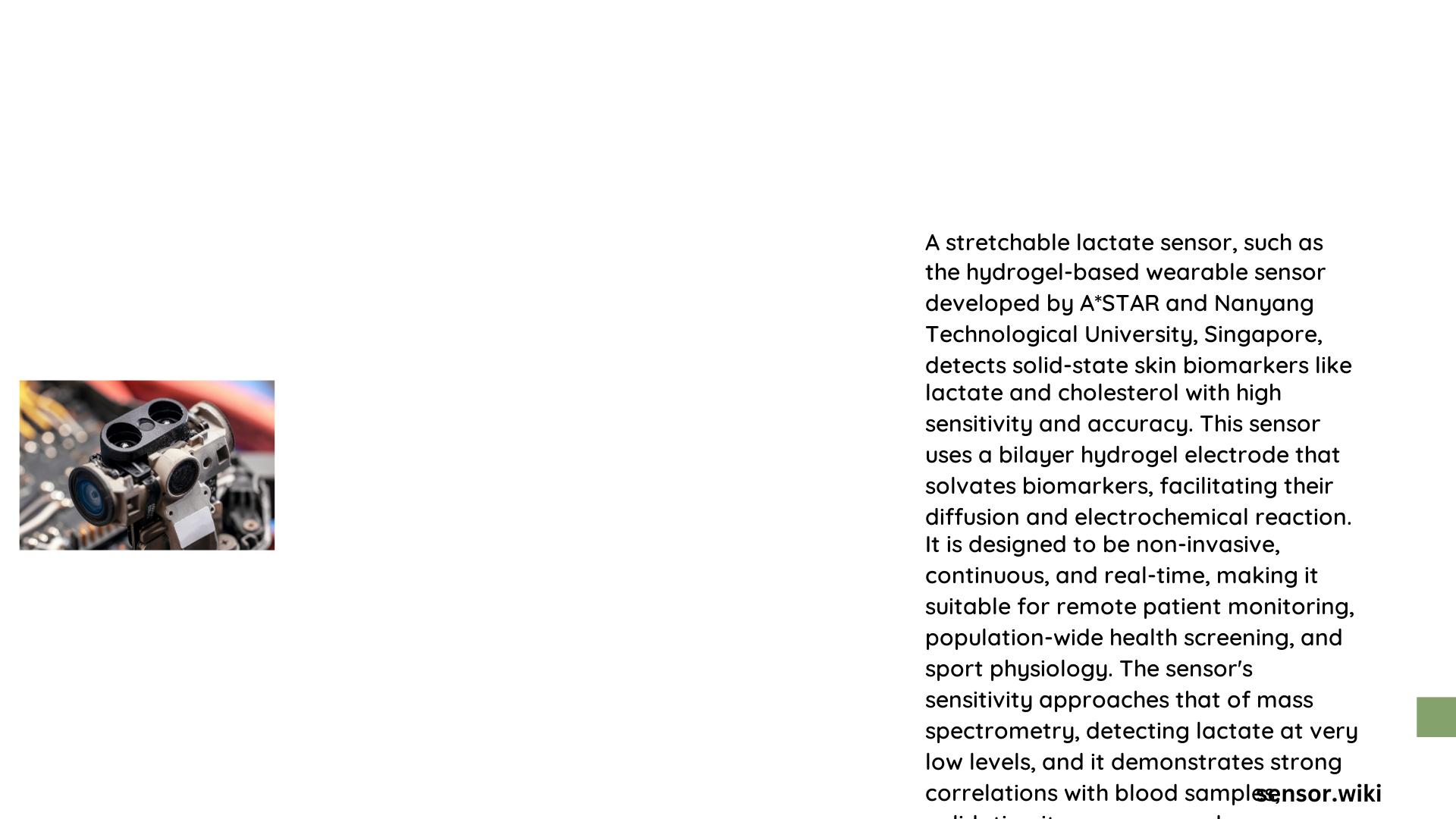Stretchable lactate sensors represent a groundbreaking advancement in biomedical monitoring, offering unprecedented capabilities to track metabolic performance through flexible, skin-conformable devices. These innovative sensors leverage sophisticated nanomaterials and advanced electrochemical techniques to provide real-time, precise lactate concentration measurements, enabling athletes, researchers, and healthcare professionals to gain deeper insights into physiological processes with minimal invasiveness and maximum comfort.
What Makes Stretchable Lactate Sensors Unique?
Core Technology Behind Sensor Design
Stretchable lactate sensors utilize sophisticated material engineering to create flexible, responsive biosensing platforms. Key technological components include:
- Graphene Oxide Nanosheets: Provide exceptional electrical conductivity
- Enzyme Integration: Lactate oxidase enables precise metabolite detection
- Flexible Substrates: Polyimide and polyester foils ensure skin compatibility
How Do Stretchable Lactate Sensors Work?
The sensor’s operational mechanism involves several critical steps:
- Enzyme Interaction: Lactate oxidase catalyzes lactate oxidation
- Electrochemical Conversion: Generates measurable electrical signals
- Signal Processing: Converts enzymatic reactions into quantifiable lactate concentrations
Performance Metrics of Advanced Stretchable Lactate Sensors
| Parameter | Specification |
|---|---|
| Detection Range | 1-50 mM Lactate |
| Response Time | <55 seconds |
| Accuracy | R² = 0.997 |
| Operational Lifespan | Up to 4 weeks |
What Challenges Do Researchers Address?
Researchers focus on overcoming several critical challenges:
- Skin Adhesion: Developing non-irritating, comfortable sensor designs
- Sweat Interference: Minimizing environmental variable impacts
- Long-Term Stability: Ensuring consistent performance across extended periods
Potential Applications of Stretchable Lactate Sensors
Stretchable lactate sensors demonstrate remarkable potential across multiple domains:
- Sports Performance Monitoring
- Medical Diagnostics
- Exercise Physiology Research
- Personalized Healthcare Tracking
Technical Innovations in Sensor Development
Key technological breakthroughs include:
- Biocompatible nanomaterial integration
- Advanced enzyme immobilization techniques
- Flexible electrode design
- Miniaturized sensing platforms
Future Research Directions
Emerging research focuses on:
- Enhanced sensitivity
- Reduced manufacturing costs
- Expanded metabolite detection capabilities
- Improved signal processing algorithms
Conclusion

Stretchable lactate sensors represent a transformative technology bridging advanced materials science, biochemistry, and wearable electronics. By enabling non-invasive, real-time metabolic monitoring, these devices promise to revolutionize our understanding of human physiological processes.
References:
– https://pubs.acs.org/doi/10.1021/acssensors.1c01009
– https://www.mdpi.com/2079-6374/6/3/48
– https://www.sciencedirect.com/science/article/abs/pii/S0039914020301016
